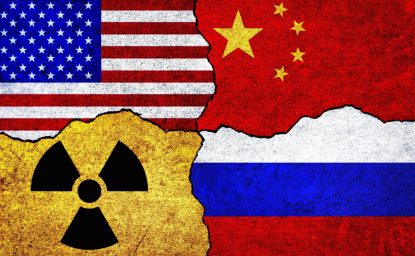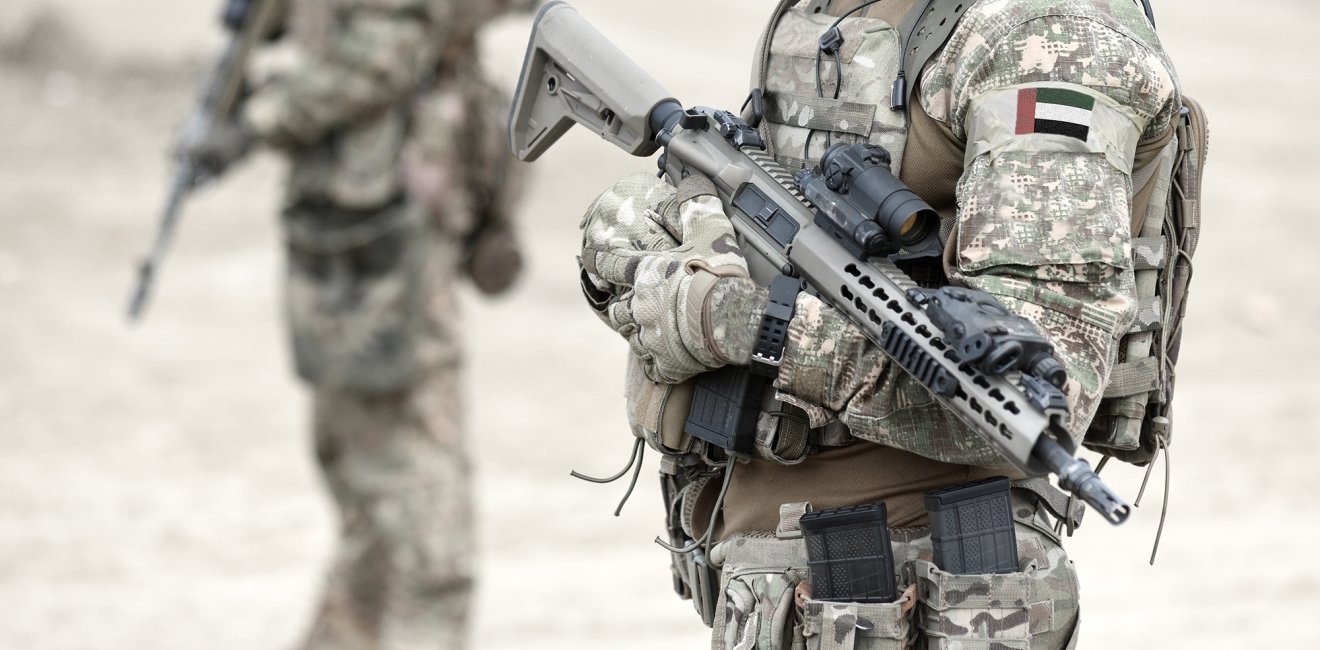A vastly expanded arms race is breaking out in the Persian Gulf – sparked by the Trump Administration’s plan to sell the U.S. cutting-edge stealth F-35 warplane to the United Arab Emirates (UAE) and the end of a UN-imposed arms embargo on Iran on Sunday, October 18. The race pits the United States against Russia in a fierce competition to lock in multi-billion-dollar deals for their respective top-of-the-line arms and for Moscow to break the long-standing U.S. monopoly over major deals to the Gulf Arab monarchies.
Growing opposition from Israel and its allies in Congress leaves in doubt whether the UAE deal will take place, particularly after reports that the arms package includes the U.S. Navy’s electronic warfare aircraft, the EA-186 Growler, and the Air Force’s armed MQ-9 Reaper drone. In addition, another key U.S. Gulf Arab ally, Qatar, has formally applied to purchase the F-35 fighter jet and Saudi Arabia has also expressed interest in acquiring it.
No F-35 or Growler has ever been sold to Arab countries, while Israel now has two squadrons of F-35s and manufactures its own strike drones.
The United States has long dominated the Middle East’s lucrative arms bazaar, where half of all US arms exports were sold in the 2015-2019 period.
The Trump administration could seek to circumvent congressional opposition by declaring a “national security emergency” and go ahead with the UAE arms sale. This is what it did in May last year to override similar opposition to an $8 billion arms package for Saudi Arabia and the UAE; mostly munitions for their war in Yemen against Iranian-backed Houthi rebels. Press reports say the Trump administration wants to conclude the F-35 sale by December 2, the date the UAE celebrates its National Day marking independence from Britain in 1971. Trump in July also loosened export restrictions to allow U.S. defense contractors to sell armed drones such as the Reaper.
The United States has long dominated the Middle East’s lucrative arms bazaar, where half of all US arms exports were sold in the 2015-2019 period. Saudi Arabia, the world’s leading purchaser, accounted for 25 percent of these exports and the UAE another six percent, according to the Stockholm International Peace Research Institute’s latest report on world arms transfers. Russia, on the other hand, increased its arms sales to the Middle East by 30 percent over that same period compared to 2010-2014, concentrated mostly on Egypt (up 191 percent) and Iraq (up 212 percent).
Since 2009, the United States has approved military sales to the kingdom totaling $141 billion, according to the Congressional Research Service. Saudi Arabia as well as the UAE and Qatar are now seeking to upgrade their air forces with the latest U.S. or Russian warplanes. They have also been in talks with Russia about purchasing the much-vaunted S-400 missile defense system. Russia has been focusing its sales pitch in particular on the UAE. Its official press claims it has already decided to buy the Sukhoi Su-35s and is considering a Russian proposal to help finance and co-produce the even more advanced “fifth generation” SU-57 warplane. In 2018, the UAE signed a “Strategic Partnership” agreement with Russia that included the security sector.
The decision last month by the UAE to normalize relations with Israel has dramatically increased the prospect for the F-35 sale, and President Trump has publicly declared that he has “no problem” with it even if Congress does. The sale was a semi-secret side deal aimed at encouraging the UAE to establish ties with Israel. Israeli Prime Minister Benjamin Netanyahu reportedly had declared he had no problem with the sale, until his security advisers voiced opposition over fears it would endanger the “qualitative military edge” that the U.S. is legally bound to see Israel maintain over its Arab neighbors.
It may well be that UAE rulers have been using talks with Russia simply to pressure the Trump administration to sell it the F-35.
If the proposed F-35 sale to the Emirates is blocked, the UAE will have to decide whether to go ahead and purchase Russia’s SU-35 instead. That would mark a major breakthrough for Russia, which has been in talks with the Emirates for three years about the warplane. Egypt, which still receives $1.3 billion a year in free U.S. military aid, received its first batch of SU-35 fighters in August, out of 24 it has committed to buy from Russia for $2 billion. Egypt, unlike the UAE, was long a major client of the Russian arms industry before former President Anwar Sadat broke with the Soviet Union and turned to the United States in 1972.
The Trump administration could threaten to impose economic sanctions on the UAE or other Gulf Arab states which purchase major Russian arms items under the Countering America’s Adversaries Through Sanctions Act of 2017. However, neither Trump nor Congress has done so when Egypt purchased the Russian SU-25. Nor have they imposed sanctions on Turkey, a NATO ally, after it defied U.S. warnings to obtain the Russian S-400 missile defense system which can target NATO warplanes.
It may well be that UAE rulers have been using talks with Russia simply to pressure the Trump administration to sell it the F-35. There have been periodic reports that Emirati leaders are “in talks” about purchasing either the Russian SU-35 or American F-35 since 2017, without reaching a firm deal for either. It has, however, bought Chinese Wing Loong strike drones when the United States refused to sell its own comparable craft. So has Saudi Arabia for the same reason, just as it did in 1987 when it secretly bought Chinese intermediate-range missiles after the United States refused to sell it the Pershing missile.
The administration’s efforts last month to get the United Nations Security Council to extend a 13-year-old arms embargo on Iran failed spectacularly. So Iran is now free to resume arms purchases.
Meanwhile, the Gulf Arab monarchies’ chief adversary, Iran, is about to join the arms race too. The 2015 nuclear deal called for the end to a UN-backed arms embargo on October 18. The Trump administration pulled out of the deal in 2018 and launched in its place a “maximum pressure” campaign of economic and financial sanctions in a bid to force it to re-negotiate and accept more limitations on its ability to become a nuclear power.
The administration’s efforts last month to get the United Nations Security Council to extend a 13-year-old arms embargo on Iran failed spectacularly. So Iran is now free to resume arms purchases. The main items on the Iranian military wish list are said to include the Russian SU-30 warplane, its S-400 missile defense system and its T-90 main battle tank.
Whether Iran can afford to go on an arms buying spree is another question. It is already in a deep economic crisis as a result of the Trump Administration’s economic and financial sanction, and it has promised to continue its “maximum pressure” campaign on its own to force Tehran into new negotiations to further constrict its armament capability.
At this point, the main accelerant of the Gulf arms race remains the Trump administration, which has based its foreign policy toward the Gulf Arab states largely on the tens of billions of dollars U.S. defense contractors stand to make out of the new Gulf arms race.
The views expressed in this article are those of the author and do not reflect an official position of the Wilson Center.
Author

Former Washington Post Middle East Correspondent

Middle East Program
The Wilson Center’s Middle East Program serves as a crucial resource for the policymaking community and beyond, providing analyses and research that helps inform US foreign policymaking, stimulates public debate, and expands knowledge about issues in the wider Middle East and North Africa (MENA) region. Read more

Explore More
Browse Insights & Analysis
US Inaction Is Ceding the Global Nuclear Market to China and Russia

Promoting Convergence in US-Brazil Relations


